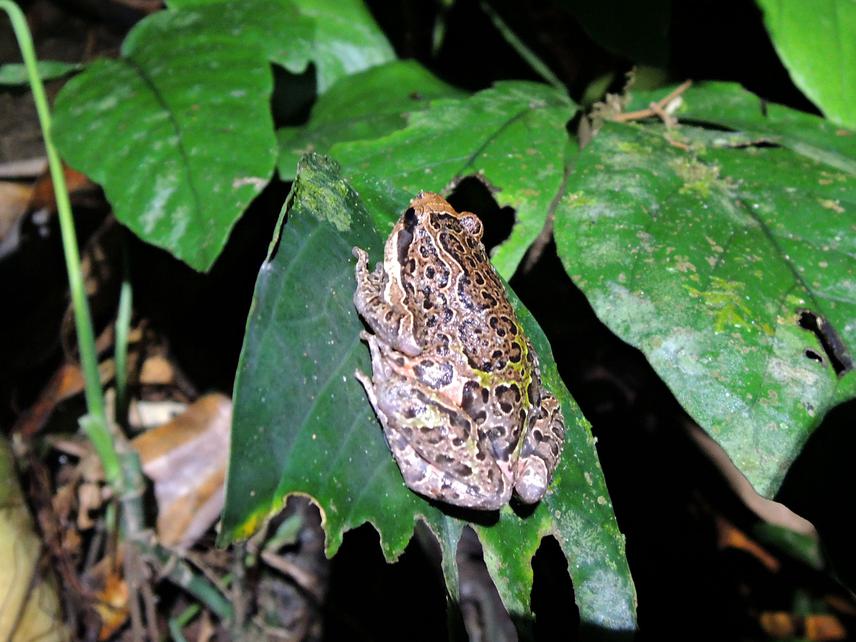Utpal Smart
Situated on the northern tip of Sumatra, the Leuser Ecosystem is an area of global importance to the conservation of biodiversity. Within this ecosystem lies Gunung Leuser National Park (GLNP), known for its high diversity in birds and mammals. However we know surprisingly little about its herpetofauna; to better estimate species diversity we propose to carry out a herpetofaunal inventory in GLNP.

Chaperina fusca-marpunge.
The aim of this project is to make a baseline inventory of the current diversity and discover new species of reptiles and amphibians in GLNP. Based on our previous experience in Sumatra, and given that very little herpetological exploration has been done in the area, our baseline inventory is expected to significantly update and boost the estimate of species diversity of Sumatran reptiles and amphibians. Our inventory is going to be the very first attempt at systematically cataloguing the herpetofauna of GLNP. It thus promises to be essential in the formation of monitoring programs that will help conservation managers and local stake-holders to detect and understand changes in the Leuser Ecosystem. Species number is frequently used as a metric for conservation prioritization and monitoring changes in ecosystem health; this especially applies to fauna such as frogs since they are considered indicator species and their presence/absence is often indicative of ecosystem health.
Collected specimens will be deposited at the herpetological holdings of Indonesian museums for taxonomic studies and contribute to the country's growing natural history collection. These specimens will also provide information about how populations have changed over time and how that might influence conservation of threatened species.
The participation of local students and NGOs from the region is also anticipated to cultivate awareness about the importance of the Leuser Ecosystem. In the context of the ongoing Asian amphibian crisis, according to the IUCN, Indonesia is an amphibian hotspot having the largest amphibian populations in Asia. However the fact that nearly 35% of the amphibians of Indonesia are placed in the data deficient category, underlines the paucity of information that the proposed inventory will help remedy.
Our inventory will also act as an important tool in assessing conservation priorities for some of Sumatra's last, imperilled tropical rain forests that are found in this region. It will help establish a baseline of herpetofaunal diversity that is necessary for future conservation action. We will publish a species checklist on a website dedicated to Indonesian herpetofauna. Park authorities and local researchers will be encouraged to update and augment this checklist annually as new species are described or identified or as existing taxonomies are modified. A scientific report of the findings will also be prepared and submitted to park officials, participating NGOs and relevant scientific organizations. The tissue and DNA database generated through this project will be made available on request for comparative studies and will hopefully foster national as well as international collaborations focusing on the conservation of rapidly vanishing Indonesian herpetofauna. This project will also provide us the opportunity to work closely with and train members of the participating Indonesian NGO, university students and park officials in scientific techniques empowering them to carry out their own independent research. Indonesia is 6th amongst the 20 most amphibian and reptile diverse countries in the world and according to some experts, with more thorough explorations like ours it is projected to surpass Brazil, the current most herpetologically diverse nations.